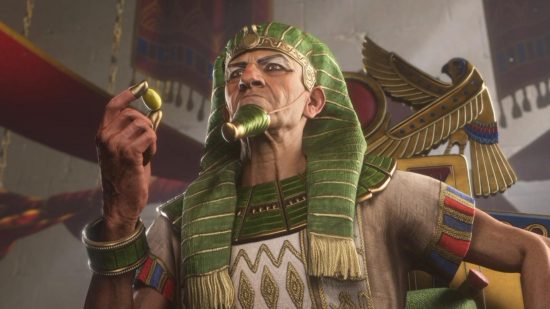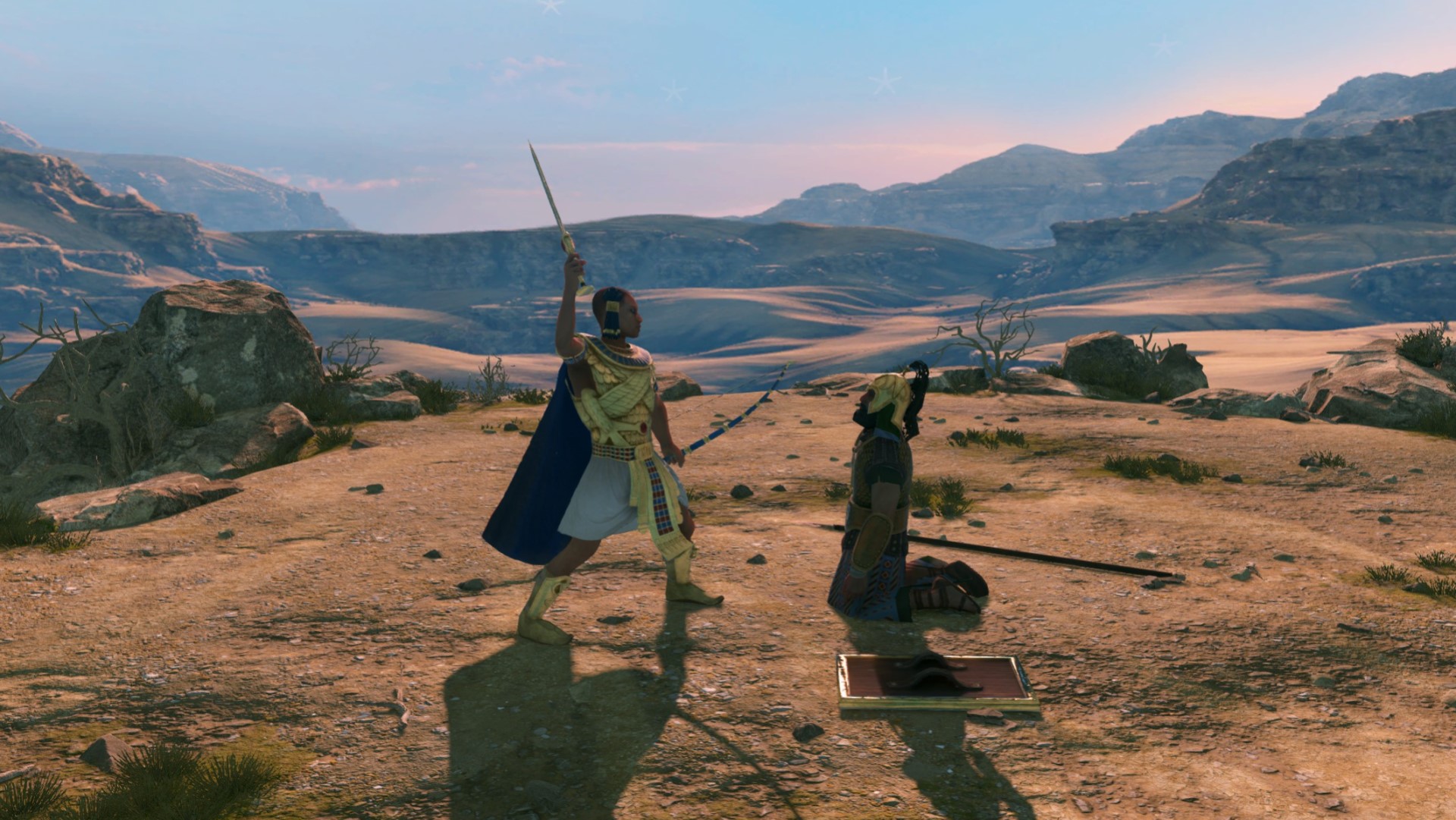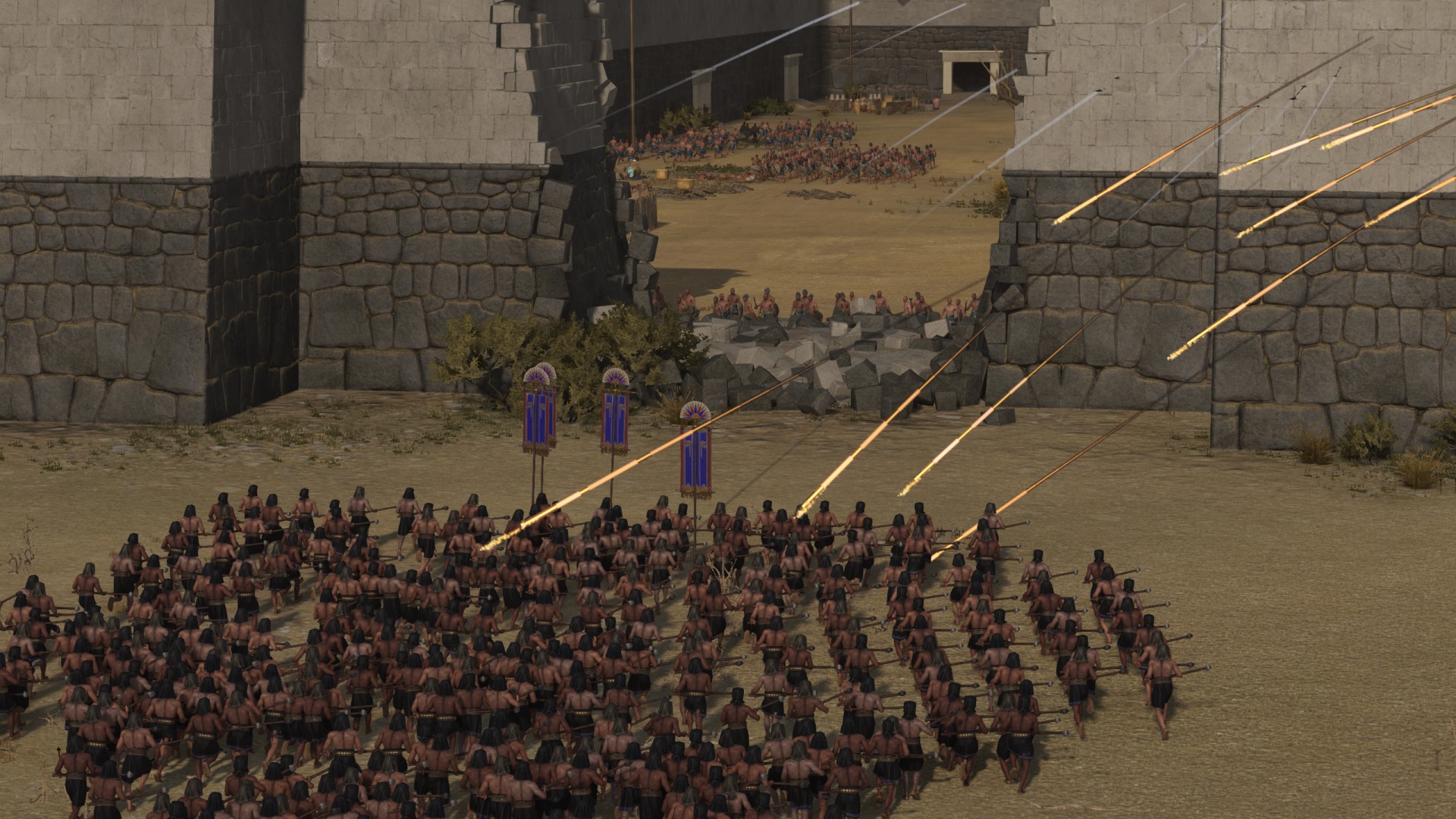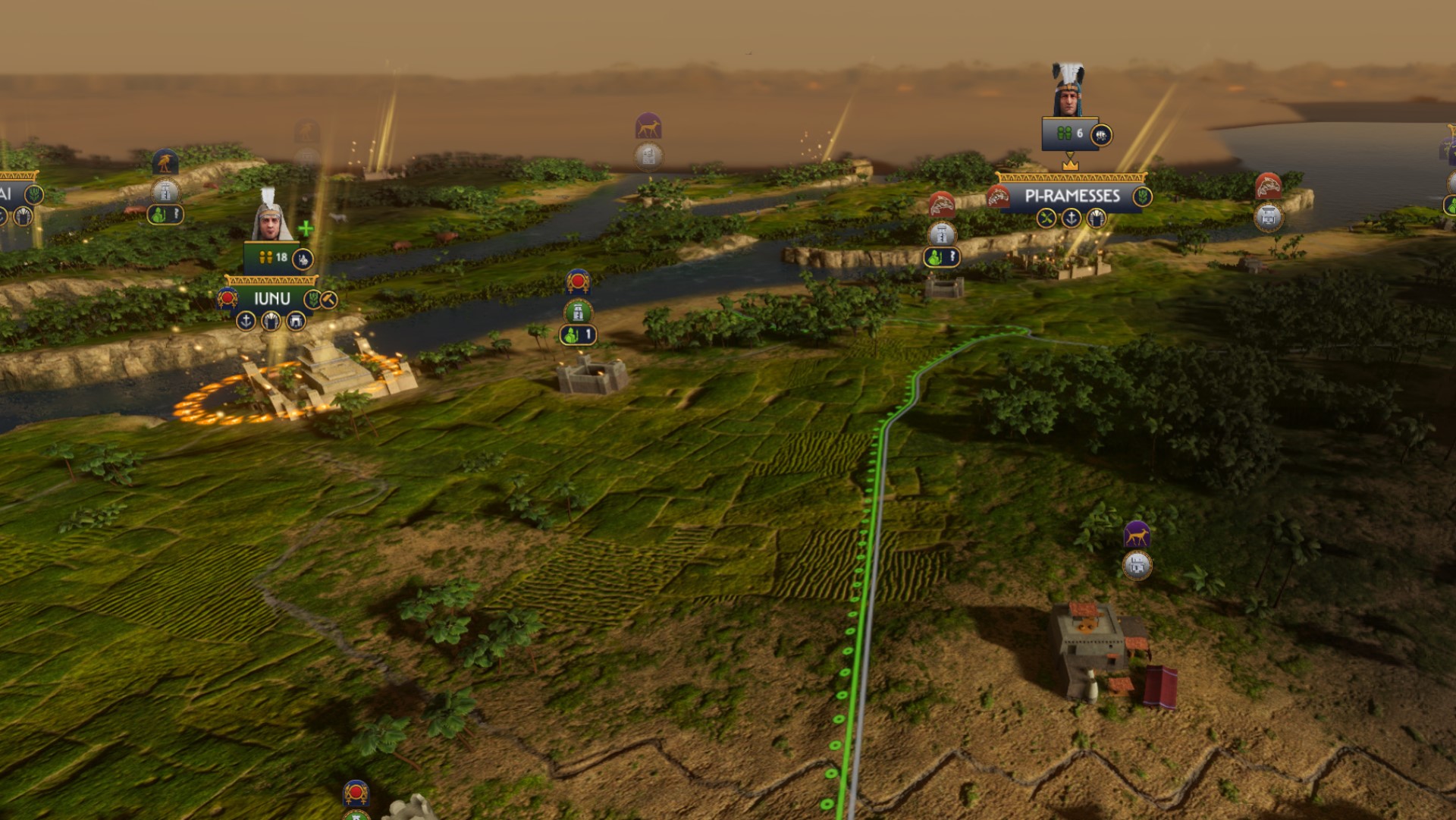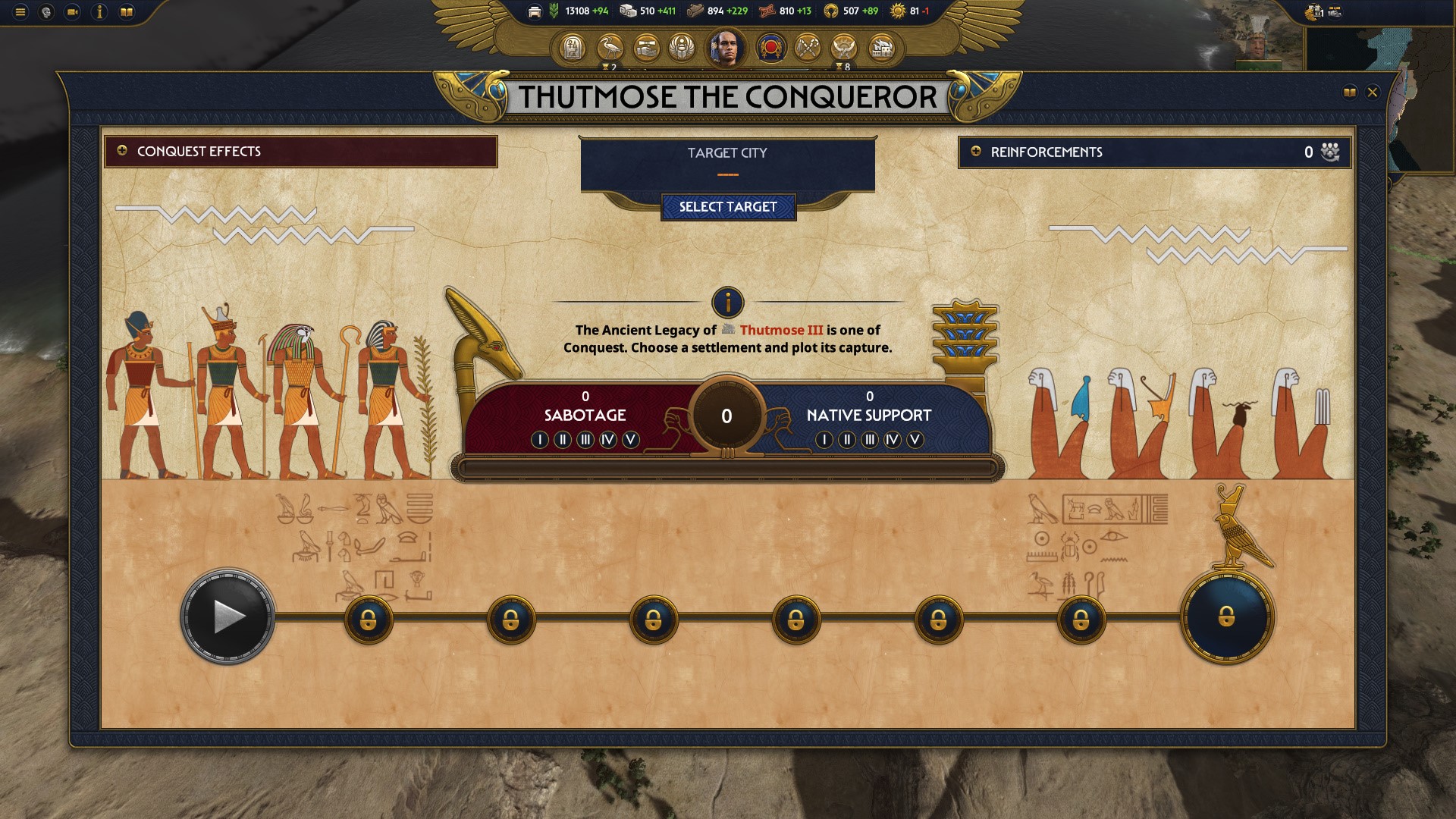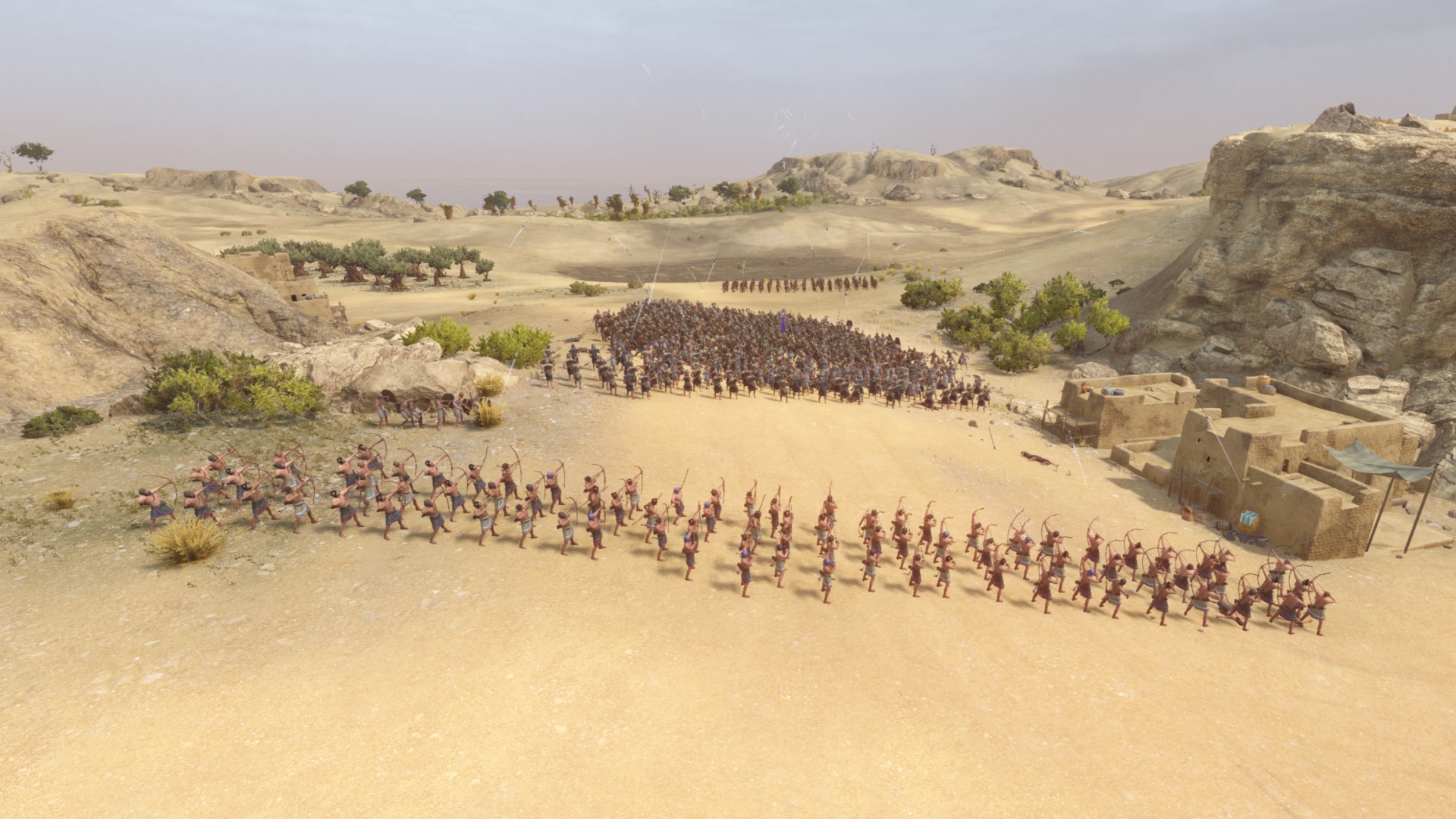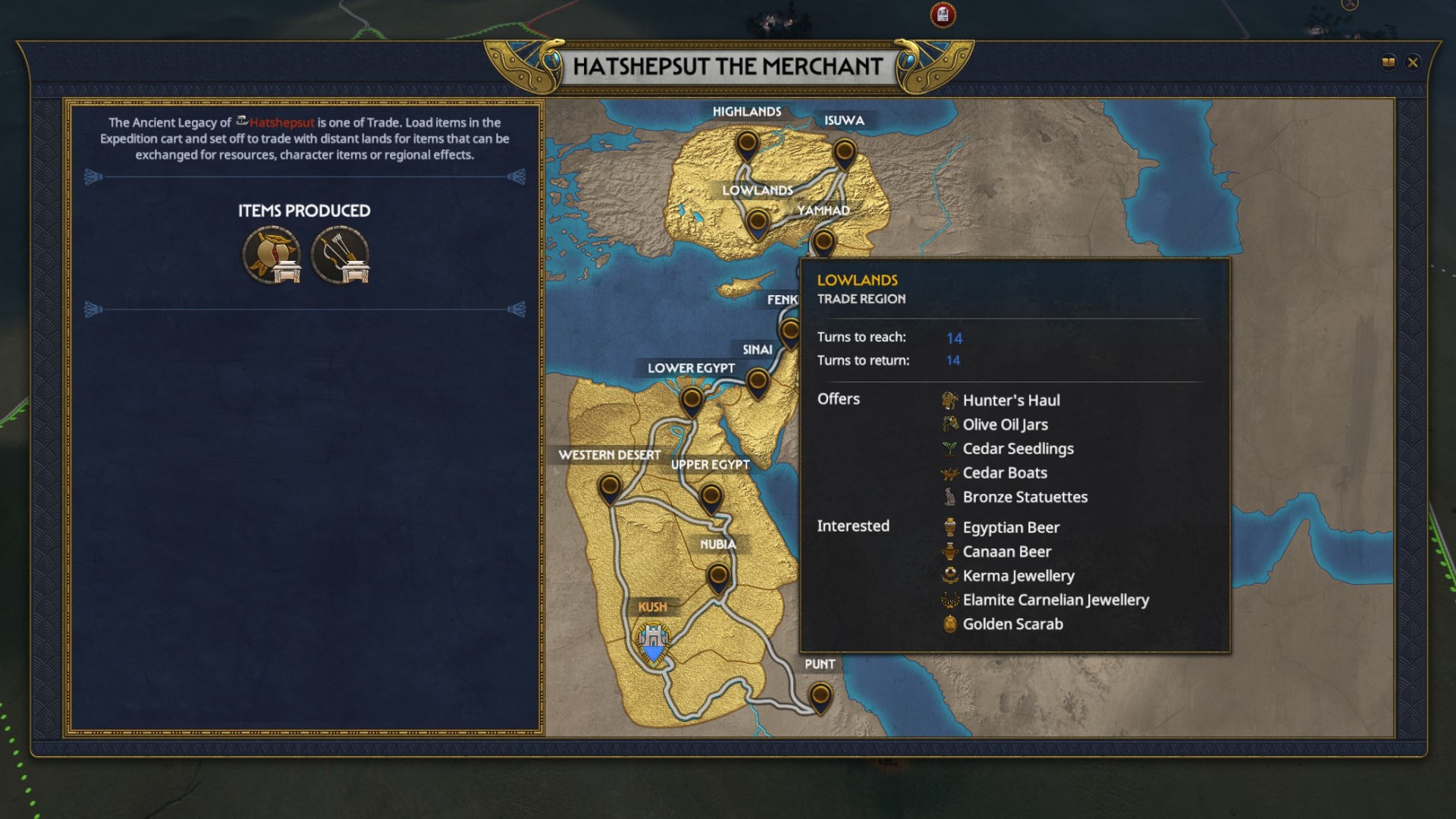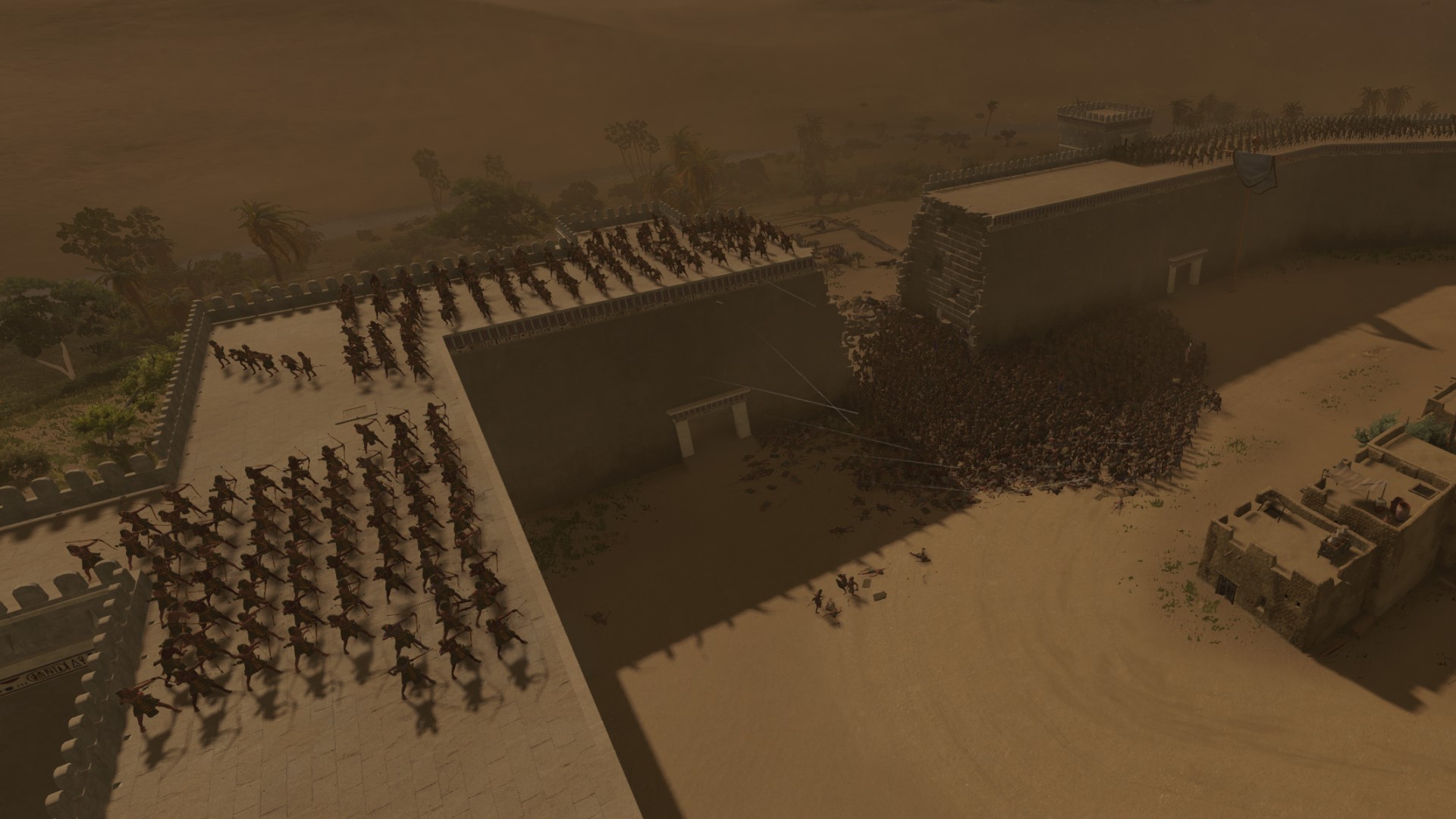Our Verdict
Old issues return and some of its new ideas are less effective than others, but Total War: Pharaoh remains a strong and exciting addition to the series' historical catalog.
There’s no denying that the three big Warhammer games have been the star of the Total War show for the past several years, and so I had a few questions in mind right away as I approached this Total War: Pharaoh review. Is this a new era for historical Total War games, or has the strategy game series remained more or less unaltered after its years-long journey through Warhammer’s Mortal Empires? The answer, for better and for worse, is “a bit of both.”
Set in the 12th century BC, Total War: Pharoah is the series’ furthest dive back into ancient history. It’s a rough retelling of the collapse of the Late Bronze Age, the cause of which is still a topic of debate by modern historians. Whether it was the shift to iron, invasions by the Sea Peoples, internal political rot among the major powers, or volcanic eruptions, one thing is clear: the period saw a rapid and catastrophic decline from an era of prosperity and growth to one of isolation, deprivation, and violence.
There’s plenty of all of that in Total War: Pharaoh. Whether you choose to play as an Egyptian, Hittite, or Canaanite leader, the wave of catastrophe is on its way. Both Egypt and Anatolia face looming civil wars, the Sea Peoples are on their way to raid coastal towns and villages, and the fragile farming ecosystem that supports all three civilizations balances on a razor’s edge of sustainability at all times.
Total War: Pharaoh features a welcome UI refresh that I think looks terrific, but some of my long-standing complaints have not been addressed: it can still be frustrating to find information you’re looking for, there are weird inconsistencies in what you can click on to pull up diplomacy menus, and the adviser system for tutorials still insists on giving ‘immersive’ guidance – in other words, it speaks to you like it’s a character in the game instead of someone showing you how to play the game.
This has been annoying me for the past half-dozen or so Total War games, and it’s no less bothersome here. For series veterans, the advice is intrusive – text boxes pop up on the screen and stay there until manually dismissed, which is irritating when I’m trying to fight my first several battles. For newcomers, the frequent messages rarely if ever contain any direction on how to perform the actions described.
A perfect example of this is in the royal court, one of the new thematic menus that help shape a campaign’s playstyle and objectives. My adviser explained that the royal court was where courtiers could scheme and conspire, hatching plots to advance their claims on the throne. That’s fine, but it should have come with some explanation of the rules of how this little mini-game actually works. As it is, I was left to work that out on my own.
These games, which provide most of the narrative structure for each leader’s campaigns, are also a bit of a mixed bag. The royal court is perhaps the weakest of the bunch: it’s a stripped-down version of Crusader Kings’ intrigue system, in which you can trade gossip for help mounting plots against your rivals or asking them for favors.
There’s also some jockeying for position within the court, but it tends to be low-stakes stuff: I might gain a higher-ranked office within the court or ask the vizier for 100 gold in profits off the mines. None of this fed back meaningfully into my diplomatic options, though: blackmailing the high priest of Amun didn’t do any reputational damage to me when it came to hammering out non-aggression pacts or trade deals with other Total War: Pharaoh leaders in the diplomacy menu.
I’m much more taken with the ancient legacy and religion systems. At the outset of a campaign, each character can choose one of four ancestral traditions to espouse. As Ramesses, who starts out in Sinai, I picked Thutmose the Conqueror, since I planned on capturing as many important cities as I could to bolster my claim on the throne. Each option funnels you into a specific kind of campaign playstyle, and Thutmose allowed me to pick a target holy city and start paying money to perform acts of sabotage or foment native resistance in advance of my eventual attack.
For my siege of Iunu, one of upper Egypt’s key cultural centers, I put all my efforts into native resistance, which resulted in a huge ten-unit stack of reinforcements showing up to help capture the city in the midst of a brutal sandstorm. We carried the day, but it was a tough fight – and the weather effects, combined with the 30 or so units I had running around on the screen, had both my processor and graphics card screaming for mercy.
The religion system is a bit more passive and involves discovering and finding favor with the gods worshiped in each region. I thought this was delightful: it highlighted the very local nature of the gods of the era and made my interactions with other cultures more interesting and rewarding. Each god provides a unique set of bonuses that get better the more time you spend praying to them and building shrines, so exploring and finding out about new deities can provide interesting boosts to your particular economic or military playstyle.
This dovetails nicely with what may be Total War: Pharaoh’s best addition to the formula, which is outposts. Each settlement has two or three slots for nearby outposts, which you can turn into forts, watchtowers, waystations, trading posts, shrines, or statues to your own splendor. Each one offers unique benefits for its region or attached settlement and can be visited by traveling armies for a specific buff. You can use the fort, for example, to house an additional garrison of soldiers who will show up as reinforcements if the town is attacked. A shrine to Ra, on the other hand, will offer any visiting army a special buff for the next several turns.
I’ve long felt that towns and provinces in Total War have been too abstract, that they rarely feel connected to the place where they’re displayed on the lovely map. The outpost system grounds them and makes them feel more connected to both each other and the campaign action. Placing waystations between cities out in the desert can make it possible for large armies to move across the barren dunes of no man’s land, and housing soldiers in a fort provides a huge discount on their upkeep costs – a critical consideration once you start recruiting elite, high-tier Medjay units and the like.
As a long-time sucker for Total War’s real-time battles, I’ve found Pharaoh’s to be basically in line with what I’ve come to expect from the series. There are some new features here: dynamic weather and terrain, armor that’s eventually destroyed as units take damage, and a new stance system that allows you to have troops fade back from frontal assaults or press forward unrelentingly. However, while these have been cool concepts to consider on paper (and to see on-screen), I’ve found they’ve made less impact than expected in action.
I’ve complained a lot about Pharaoh here, so let me be clear: I really like this game. I think Total War: Pharaoh does a terrific job of bringing its ancients theme to vivid life: the vibrant colors of the Nile delta and the cultures that filled the late Bronze Age leap off the screen. The new outposts are a real step forward for Total War’s strange real estate system, and the campaign mechanics, while a little on the shallow side, do a great job of setting the scene of an almost idyllic time that came crashing to a catastrophic end.
This brings me to my favorite aspect of Pharaoh, which is the collapse itself. Throughout the campaign, there’s a little meter sitting at the top of the screen that charts the region’s overall health. Starting in prosperity, it can fall into turmoil and then full-on collapse as invading raiders storm the shores and disputes between Total War: Pharaoh factions erupt again and again into civil wars, both in Egypt and Anatolia. As this progresses, the whole map gets darker and murkier, and the gameplay pressure ramps up to match.
Just as enemy arrows can set buildings alight and start fires that rage through settlements, a carefully run campaign can be stressed to the breaking point as this happens – there’s an apocalyptic drama to Pharaoh that I haven’t really felt since back in Total War: Attila.
While I do wish Creative Assembly would take a harder look at its approach to tutorials (and hammer out some of the menu weirdness while the team’s at it), I think Pharaoh is a strong entry in the Total War catalog and a solid way to return to the historical settings that put it on the map all those years ago.
